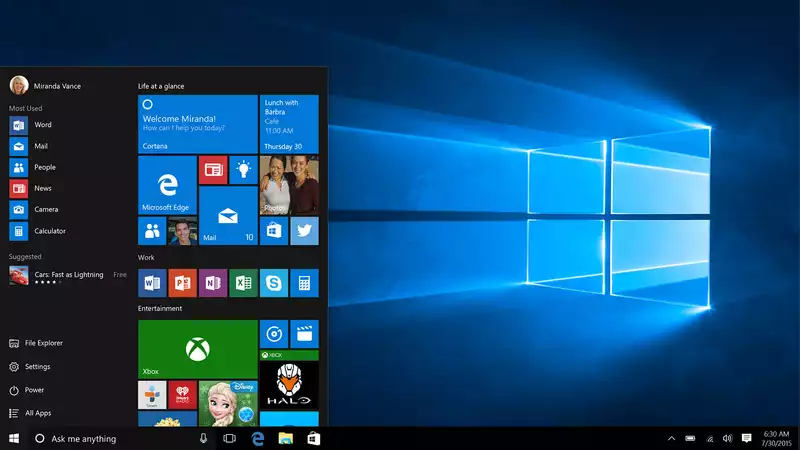Microsoft should make a bumper stick that says "64-bit or bust" and include it with retail boxes containing Windows 10. It's already the end in many ways, but if there is any doubt that we are living in a 64-bit world, Microsoft is trying to send a strong message by ending its 32-bit releases for OEMs starting this month.
As discovered by Neowin, Microsoft made this announcement in a support document outlining the minimum hardware requirements for various builds of Windows 10.
"Starting with Windows 10 version 2004, all new Windows 10 systems must use 64-bit builds and Microsoft will no longer release 32-bit builds for OEM distribution," the document states.
Microsoft is referring to the May 2020 update of Windows 10. The final build has already been pushed to OEMs and developers, and now we just have to wait for Microsoft to make the switch for the general public after final testing with the Windows Insider program.
What does this mean for you: will your PC suddenly stop working when 32-bit support ends? It probably won't matter much, and your PC will definitely not stop working.
AMD and Intel have been making 64-bit CPUs for over a decade, so unless your PC is very old, it is likely to be running a 64-bit version of Windows 10 anyway (assuming it is running Windows 10, that is).
For those who still stick with 32-bit systems or otherwise choose to install the 32-bit version of Windows 10 on their otherwise modern PCs, Microsoft says it will continue to provide feature and security updates for those devices. Microsoft did not say for how long, but at least for the foreseeable future, PCs with the 32-bit version of Windows 10 installed will continue to receive monthly security patches and twice-yearly feature upgrades.
One of the main advantages of going 64-bit is the ability to make better use of more RAM; depending on the version of Windows 10, physical memory limits range from 128 GB (Windows 10 Home 64-bit) to 6 TB (Windows 10 Enterprise 64-bit and Pro for Workstations 64-bit), while the 32-bit version of the same OS has a limit of only 4 GB.
There are other advantages, such as improved security and performance. One might ask why run Windows 10 on a 32-bit system in the first place; according to Steam's Hardware and Software Survey, only 0.2% of all users run the 32-bit version of Windows 10.
Outside of Steam, it is difficult to obtain market share figures separating 64-bit and 32-bit, but it is likely a bit higher (but not high) among the general public. For many, the upgrade to Windows 10 did not cost money. Improved security and support (Microsoft no longer supports Windows XP.
Overall, however, 32-bit has run its course and Microsoft is ready to move on.


Comments